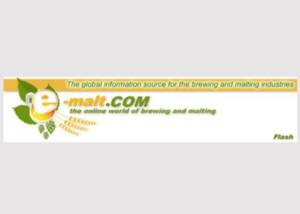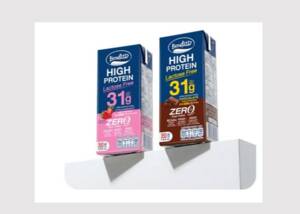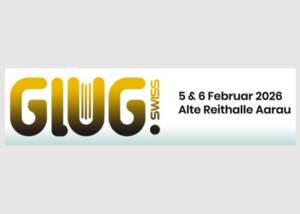SIG Combibloc: Sustained revenue growth and increased profitability
News General news
First half year 2021 highlights
- Core revenue at constant currency up 15.3%; up 8.8% on a like-for-like basis
- Middle East and Africa (MEA) business fully consolidated from end of February 2021
- Robust second quarter performance following exceptional first quarter growth
- Adjusted EBITDA margin 27.3% (H1 2020: 25.1%)
- Adjusted net income up 38% to €109.6 million

Samuel Sigrist, CEO of SIG Combibloc, said: “In the first half of 2021, we sustained strong revenue growth against a tough base of comparison and in a context of ongoing uncertainty around COVID-19. Profitability increased and the business is proving resilient in an inflationary environment.
2021 has brought a number of milestones in the expansion of our global presence. We acquired full control of our Middle East and Africa business at the end of February and the integration has proceeded very smoothly. Our new plant in Asia Pacific has been up and running since the beginning of the year and in April we announced the construction of a new plant in Mexico to serve North America.
Sustainability continues to be top of mind for us and for our customers. It is at the heart of our carton packs, which are made largely of renewable materials and are fully recyclable. We continue to see customer launches involving a switch to carton from PET and the adoption of our formats with enhanced sustainability. Our focus on innovation goes hand-in-hand with our vision of a net positive food packaging system. It means that we will continue to enhance the value of our offering to customers while striving to deliver positive outcomes for both people and the planet.”
Consolidation of Middle East and Africa business
With effect from the end of February, revenues of the former Middle East and Africa joint ventures are fully consolidated and presented in a new segment, Middle East and Africa (MEA). The segment Europe, Middle East and Africa (EMEA) relates to the Group’s reporting structure which was in place for the first two months of the year, prior to acquisition of the MEA business.
The acquisition of the former joint ventures in the Middle East generated incremental revenue of €68 million in the first half of 2021. This takes account of sales to external customers in the Middle East and Africa less the elimination of inter-company sales to the Middle East, which prior to the acquisition were treated as external sales. The acquisition contributed €14 million incremental adjusted EBITDA in the first half of 2021, representing adjusted EBITDA from the MEA region over four months less dividends received in the first half of 2020.
Sale of Whakatane paper mill in New Zealand
Following the announcement in March 2021 of the closure of its paper mill in New Zealand (Whakatane), SIG was able to identify potential buyers. This resulted in the sale of the paper mill on 3 June 2021 for NZD 1 to a consortium of investors who will enable the paper mill to continue to operate.
Revenue by region: H1 2021
In Europe, revenue in the first half of 2021 was 1% higher at constant exchange rates on a like-for-like basis. Starting in March, performance was measured against the period in 2020 marked by the onset of the COVID-19 pandemic, when consumer stock-piling was followed by customer and retailer re-stocking. These effects did not recur in 2021. However, the liquid dairy business continued to benefit from high at-home consumption due to ongoing restrictions on office working.
In the Middle East and Africa, like-for-like constant currency growth for the four months to June 2021 was 2.1%. Exceptionally high sales in March were followed by a more muted second quarter, also measured against a very strong Q2 2020. The non-carbonated soft drinks market has been negatively affected by COVID-19, with lower out-of-home consumption. At the same time, drought in South Africa temporarily affected the liquid dairy business.
Asia Pacific saw a significant boost to sales from re-stocking in the first quarter, which was followed by slower growth in the second quarter. Market conditions in China have returned to more normal levels although some COVID-19 effects remain. Demand for white milk in China is robust due to its acknowledged health benefits. The situation in South-East Asia continues to be affected by COVID-19 and on-the-go consumption, which plays a key role in these countries, remains constrained.
The Americas saw exceptional growth reflecting the contribution of fillers deployed in Brazil in the course of 2020. At-home consumption continued to drive demand in both Brazil and Mexico. Revenue in the USA benefited from the re-opening of restaurants and a re-stocking of foodservice products packed in SIG cartons.
EBITDA and adjusted EBITDA
Adjusted EBITDA increased to €264.1 million in the first half of 2021, including the consolidation of earnings from the Middle East and Africa business since March. The adjusted EBITDA margin compared with the first half of 2020 was significantly higher at 27.3%. The margin benefited from operating leverage and from lower raw material costs due to hedge contracts entered into during 2020. These more than offset the impact of higher spot prices for aluminium and polymers. SG&A costs were also lower compared with the first half of 2020.
Reported EBITDA increased to €283.5 million from €213.9 million in the first half of 2020.
Net income and adjusted net income
Adjusted net income increased to €109.6 million from €79.6 million in H1 2020. The increase primarily reflects the improvement in adjusted EBITDA, which was partly offset by additional depreciation and amortisation as a result of the Middle East and Africa acquisition.
Net income was €92.0 million compared with €10.0 million in H1 2020. The increase in net income in 2021 reflected impacts of the acquisition accounting, which are non-cash, the non-recurrence of foreign exchange losses in 2020 and a positive contribution from the revaluation of commodity derivatives. These were partly offset by non-cash expenses of €22.4 million related to the sale of the mill in New Zealand and the closure of a production plant in Australia.
Capital expenditure
Gross capital expenditure was €113.0 million in the first half of 2021 (H1 2020: €100.2 million). The increase was due to higher investment in filling machines. Net capital expenditure, after deduction of upfront cash received from customers, was €68.0 million (7.0% of revenue) compared with €80.2 million (9.3% of revenue) in H1 2020.
Free cash flow
Net cash from operating activities increased versus H1 2020 and includes operating cash flow from the consolidation of the Middle East business. This was partly offset by the absence of dividends from the Middle East joint ventures. Free cash flow also reflected higher capex and lease payments. The Group’s cash generation is weighted towards the second half of the year due to the seasonality of the business.
Leverage
At the end of February, SIG paid €167.0 million to the Obeikan Investment Group (OIG), representing the cash component of the consideration for OIG’s 50% share in the Middle East joint ventures. The Company also assumed €36.1 million of net indebtedness (excluding lease liabilities) from the Middle East joint ventures.
A dividend of CHF 0.42 per share was paid out of capital contribution reserves on 28 April 2021, equating to a total distribution of approximately €128.1 million. Net leverage at end-June 2021 was unchanged compared with end-June 2020 and reflects the seasonality of cash flow.
Full year outlook
For the full year, the Company expects core revenue growth on a like-for-like basis of 4-6% at constant currency. Whereas earlier in the year growth was expected to be in the lower half of this range, the strong first half performance opens up the possibility of growth in the upper half of the range. The outturn will, however, depend on the evolution of COVID-19 related uncertainties in the second half.
Assuming no major deterioration in exchange rates, the adjusted EBITDA margin is expected to be within the 27-28% range. Net capital expenditure is forecast to be within the targeted 8-10% of revenue range in 2021 and mid-term.










